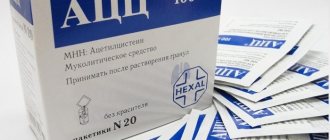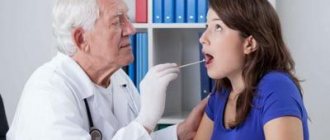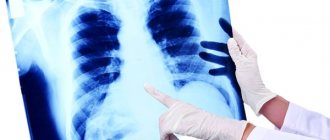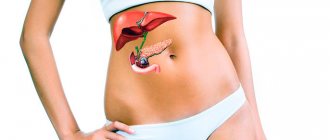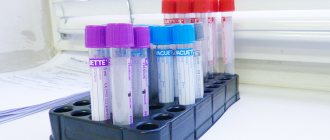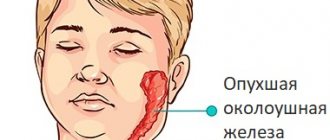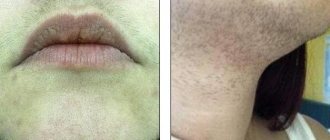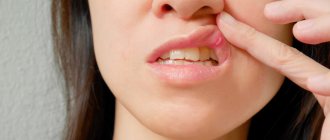Pancreatitis is a disease in which the pancreas is gradually destroyed. It happens like this: due to inflammation, its functions are disrupted, digestive enzymes cannot enter the duodenum, and remain inside the gland. Its self-digestion begins. In addition, the enzymes and toxins produced can enter the bloodstream and damage other internal organs - the liver, kidneys, and heart.
Statistically, pancreatitis develops more often in men than in women. A person's gender has no effect on the development and course of the disease. But nevertheless, cases of alcohol abuse are more common among men, and it is one of the causes of serious digestive problems.
What is pancreatitis
Destruction of gland tissue occurs under the influence of an inflammatory or degenerative process. At the same time, enzymes and toxins are actively produced, leading to acute intoxication. As a result, other organs suffer - lungs, kidneys, brain tissue, liver, heart muscle. It is possible that hemorrhage may occur in the organ, which can lead to death.
The gland itself is located under the duodenum. It is involved in digestive processes and participates in metabolism. Organ disease can occur in acute or chronic form.
Normal tissues must produce special enzymes involved in the digestion of carbohydrates, protein compounds and fats. The pancreas also synthesizes a very important hormone for the body - insulin, which is involved in the breakdown of glucose.
Why does pancreatitis occur more often in men than in women?
According to statistics, men are more likely to suffer from this disease. This is primarily due to the fact that they are more likely than women to abuse alcohol and eat “junk” food. In addition, men are usually more physically active; often their professional activities involve intense physical activity and heavy lifting, which negatively affects the condition of the pancreas and other digestive organs.
Psychological characteristics characteristic of men also contribute to the development of pancreas pathology: most men are susceptible to stress because they do not “give vent” to their emotions, which leads to psychosomatic problems. One of the most common psychosomatic diseases is pancreatitis.
Causes of pancreatitis
Many factors lead to the development of a dangerous pathology, including disturbances in the outflow of bile, as well as an irrational diet, including abundant meat and sweet foods.
Pancreatitis is sometimes provoked by acute alcohol poisoning, as well as all kinds of diseases:
- herpetic infection;
- appendicitis;
- food allergic reaction;
- gastritis;
- viral infection.
It is also important to highlight hereditary predisposition and injuries to the organ, for example, as a result of a blow or fall. Alcoholics and people with severe obesity, as well as pregnant women with weakened immune systems, are at risk.
The development of the degenerative-inflammatory process is facilitated by chronic gastrointestinal pathologies, injuries in the peritoneum, gallbladder spasms, and abuse of certain medications, especially hormonal ones. Pancreatitis is caused by parasites that have settled in the intestines, endoscopic or abdominal operations. Long-term pancreatitis is difficult to treat if there are concomitant diseases of the liver, thyroid gland, ulcerative colitis and vascular atherosclerosis.
Causes
As you already understand, the main reason is the aggressive production of enzymes. Additional reasons include:
- Uncontrolled and frequent drinking of alcohol.
- Diseases of the biliary tract, most often pancreatitis (acute) occurs against the background of cholelithiasis.
- In case of poor nutrition, for example: constant intake of fatty foods, especially on an empty stomach.
- The acute course of the disease can occur as a result of incorrectly performed endoscopic intervention (injury to the pancreas).
- Incorrect use of medications, for example: Tetracycline or Metronidazole.
When the disease is acute, a variety of symptoms occur, the obvious sign being hyperparathyroidism, which means elevated levels of calcium in the blood. But this indicator can also indicate endocrine diseases. Therefore, in order to make an accurate diagnosis, it is necessary to undergo a series of diagnostic examinations.
In addition to these reasons, every person should understand that any infection has a direct effect on the pancreas. If treatment for acute pancreatitis is not started in time, serious health complications may occur.
How is pancreatitis classified in medicine?
Medical experts classify inflammation of the pancreas differently. The main one divides pancreatitis into:
- chronic with exacerbation;
- chronic;
- acute recurrent;
- spicy.
Pathology usually passes from one form to another. This happens when acute pancreatitis, not treated in a timely manner, becomes chronic. Some patients experience pancreatic syndrome. If more than six months have passed since the previous attack, then it is considered that a relapse of a chronic disease has occurred.
There are also different degrees of damage to the gland:
- total-subtotal pancreaticonecrosis;
- pancreaticonecrosis (large focal, medium focal, small focal);
- edematous stage.
In the latter case, areas of necrosis, that is, tissue necrosis, are not yet visible on ultrasound; pancreatic cells only begin to die. The destructive stage is pancreaticonecrosis. These are destructive processes occurring in different parts of the organ - in the head, body, tail.
Pancreatitis is divided into phases:
- enzymatic (first 3-5 days);
- reactive (6-14 days);
- sequestration (more than 15 days);
- initial (up to six months).
As a result of the purulent-septic process, mortality often occurs. Patients with such risks should absolutely not drink strong drinks.
What to do before the ambulance arrives
If you are registered with a doctor with a similar diagnosis and you have an attack, then drastic measures must be taken urgently. Each relative and the patient himself must do:
- lie on your side;
- put cold on the upper abdomen;
- call an ambulance.
It is strictly forbidden to give the patient anything to drink or eat during an attack. In addition, you should not give painkillers yourself. Otherwise, antispasmodics will “blur” the overall picture of symptoms and it will be more difficult for the doctor to make a correct diagnosis.
Chronic form of pancreatitis
This stage of the disease is quite common. It is characterized by unpleasant symptoms - aching constant or periodic pain, signs of endocrine insufficiency and digestive disorders. Irreversible destructive processes begin in the pancreas.
It becomes covered with fibrous tissue, wrinkling and narrowing of the tissue occurs. Acini disappear in some areas. Dense salt deposits (calculi) form in the organ.
The chronic form of the pathology practically does not manifest itself at all and can masquerade as other diseases of the peritoneal organs - peptic ulcer, cholecystitis. It also has its own subtypes:
- secondary and primary;
- obstructive;
- autoimmune;
- hereditary;
- idiopathic;
- toxic-metabolic.
The primary form can be medicinal (due to an excess of provoking medications) and alcoholic (due to abuse of strong drinks). Post-traumatic pancreatitis is also distinguished. It appears after surgery or blunt abdominal trauma.
The main symptom of the chronic course of the disease is exocrine insufficiency, that is, a lack of certain digestive enzymes. Cystic growths may appear in the organ, excess fluid or even pus may accumulate. Malignant tumor processes can develop in the head of the gland.
In parallel with chronic pancreatitis, obstructive jaundice develops. The progressive inflammatory process itself can either worsen or subside over the course of many years. Normal organ tissues are replaced by scar adhesions.
Treatment in adults
Treatment of pancreatitis consists of:
- Drug therapy. Here, medications are used that relieve pain, provide anti-enzyme treatment, restore the acid-base balance, saturate with vitamins, and restore the activity of the gastrointestinal tract. Intravenous nutrition may be used.
- Dieting.
- Surgical intervention, if necessary.
- Sanatorium treatment.
Medicines are prescribed by a doctor individually, taking into account the course of the disease and some characteristics of the patient. The following drugs may be prescribed for the treatment of pancreatitis:
- Relief from pain. Antispasmodics are taken - “Spazmalgon”, “No-shpa” and M-Anticholinergics – “Metalin”, “Atropine”. When it is impossible to get rid of pain using these means, take H2 blockers - Ranitidine.
- Antienzyme therapy. It is used to block protein synthesis and many enzymes. This reduces pain, eliminates swelling and microcirculatory disorders.
- To reduce the acidity of the stomach, that is, relieve pain during an attack, antisecretory drugs can be used - cytostatics (Gordox, Ribonuclease) and proton pump blockers (Omeprazole). For the edematous form of the disease, Asparkam is used.
- In order to reduce the load on the inflamed organ and reduce secretory activity, pancreatic enzymes are taken - “Festal”, “Pancreatin”, “Mezim”. They should be consumed after meals and washed down with non-carbonated alkaline mineral water.
- To normalize the acid-base balance, medications are prescribed that normalize the pH in the digestive organs. These include: “Gastal”, “Almagel”, “Maalox”.
- Saturation with vitamins. When treating a chronic form of pathology, vitamins A, E, C, D, K and group B must be taken. In addition, cocarboxylase and lipoic acid must be taken.
- To improve the functionality of the gastrointestinal tract, the following are prescribed: Motilium, Cerucal.
- Parenteral nutrition. When pancreatitis is severe and food is poorly absorbed, parenteral nutrition is prescribed - a mixture of amino acids “Aminosol”, “Alvezin” (250-400 ml each).
During meals, it is advisable for the patient to take enzyme preparations that help the pancreas function and help improve digestion:
- "Mezim forte";
- "Festal";
- "Creon";
- "Pancreatin".
To restore the intestinal microflora, the patient is prescribed probiotics during recovery:
- "Bifiform";
- "Linex";
- "Lactofiltrum".
Surgery
Surgical intervention is resorted to in advanced forms of pancreatitis, and when it is not possible to completely cure pancreatitis with medication. Laparoscopy with drainage placement is usually used. After the operation, the patient is given injections of antibiotics and treated with other drugs that relieve symptoms of inflammation.
Sanatorium treatment
Visiting specialized resorts and sanatoriums, the procedures of which are aimed at treating the digestive organs, helps well in treating the disease.
These sanatoriums provide treatment with mineral waters directly from the source - “Pyatigorsk”, “Kislovodsk”, “Zheleznovodsk” and other resorts.
Diet
The basic principle of treating acute pancreatitis in adults is fasting. In case of exacerbation of pancreatitis, the intake of any food is completely excluded for several days. Only drinking water without gas is allowed.
After the acute inflammatory process subsides, the patient is prescribed a strict diet, which consists of complete exclusion from the diet:
- fried, spicy and fatty foods;
- mushrooms;
- spices, vinegar, smoked meats;
- pasta;
- pork, lamb, offal, lard;
- butter;
- cakes, pastries, sweets;
- alcohol, coffee, cocoa;
- chocolate;
- white fresh bread.
The basis of the diet is cereal and vegetable dishes prepared by boiling and stewing.
The following foods should be included in your diet:
- fruits with a neutral taste (pears, apricots);
- steamed or boiled vegetables (excluding tomatoes);
- tomato juice;
- low-fat fish, boiled or steamed;
- chicken, rabbit, veal;
- some fermented milk products: kefir, low-fat cottage cheese;
- cereals;
- herbal teas, still water.
The acute form of the pathology cannot be cured without a diet, but in case of chronic pancreatitis it is followed throughout life.
Dishes are steamed, boiled, baked in the oven. You should eat food 5-6 times a day in small portions, meals are taken warm.
Folk remedies
In addition to basic treatment, traditional medicine methods are often used:
- Kissel made from sprouted oat grains. Oats are soaked, left for 48 hours in a warm place, rinsed, dried, and ground. Pour the resulting flour with cold water, bring to a boil, cook for 2 minutes, stirring. Leave for 20 minutes, strain. The course of therapy is up to 30 days.
- Rosehip infusion. Adults with a similar diagnosis should drink up to 0.4 liters of this drink daily. The fruits are poured with hot water, left for 2 hours in a thermos, and drunk half a glass before meals.
- A decoction of flax seeds. To prepare the drink, pour 80 g of seeds into 1 liter of water. Cook for 2 hours with the lid closed, strain. Drink daily 3 times a day before meals. The course of treatment is up to 2 months.
- Potato and carrot juice. It helps relieve abdominal pain and normalizes digestion. To prepare, take 2 potatoes, 1 carrot, pass through a juicer. Drink juice 30 minutes before meals, 2 times daily. The course of treatment is no more than a week.
- Herbal choleretic agent. Mix one part of coltsfoot and elecampane and 2 parts of string. Pour three tablespoons of the mixture into half a liter of boiling water. The mixture is boiled for 4-5 minutes and left covered for 2 hours. The decoction is drunk warm half an hour before meals. The course of treatment is 25 days.
- Propolis is effective for pancreatitis. For treatment, prepare a tincture of propolis in alcohol or buy it ready-made. Before going to bed, mix 15 drops of tincture with 100 ml of warm milk and drink. Treatment is continued for a week to allow the attack to subside.
Traditional medicine methods are considered good assistants in the treatment of pancreatitis along with drug therapy.
Acute form of pancreatitis
Aseptic inflammation occurs in this case in the acute stage. As a result, degeneration and tissue necrosis develop. A secondary purulent abscess may join. In such a situation, there is a high probability of death. In an acute situation, patients complain of severe pain, vomiting, and attacks of nausea.
There is sour belching, dry mucous membranes, and bloating of the peritoneum. With excessive vomiting, dangerous dehydration occurs and the water-salt balance is disturbed. Blue spots sometimes appear on the abdomen, the temperature rises, tachycardia, pale skin, and decreased blood pressure are observed.
In acute pancreatitis, inflammation can spread to neighboring organs of the abdominal cavity. Pulmonary abscesses, pneumonia, peritonitis, ulcerative lesions, and pleurisy appear. Carbohydrate metabolism is often disrupted and glucose levels fluctuate. Painful spasms during exacerbation of pancreatitis radiate to the sternum and heart.
A white coating appears on the tongue. If treatment is not treated in a timely manner, cysts and scars form inside the gland. Pathological fluid accumulates in the cavities, compressing healthy tissue.
Symptoms
The symptoms of the disease depend on its stage and form. At the initial stage they are practically absent. The first signs begin to appear when dangerous changes develop in the pancreas.
The chronic form of pancreatitis is accompanied by nausea, heartburn, and belching. In some cases, loss of appetite and weight loss may occur. With a long course of the disease, yellowness may develop on the skin and eye whites. The skin becomes dry and small red spots appear on it.
If the diet is violated and the consumption of fatty foods or alcohol, periods of exacerbation occur.
The main symptoms of exacerbation of pancreatitis:
- severe pain in the stomach area on the left side;
- the pain may be shingles;
- attacks of nausea and vomiting with bile;
- change in constipation and diarrhea;
- high body temperature;
- bitterness in the mouth;
- bloating, increased gas formation;
- loss of appetite;
- attacks of hiccups, dry mouth;
- drop in blood pressure;
- dyspnea;
- coating on the tongue.
If such symptoms appear, you should immediately consult a doctor.
The sooner a diagnosis is made and treatment is started, the lower the risk of developing serious complications. It is strictly forbidden to self-medicate!
5 exercises for pancreatitis. Video:
The first symptoms of a pancreatic attack
The main symptom of the disease is sharp or aching pain. They can appear for a few minutes or torment a person for several days. They appear in the upper part of the peritoneum and extend to the back area. Most often, pain occurs after eating.
The pain is accompanied by yellowing of the skin, vomiting and nausea. Sometimes there is prolonged diarrhea interspersed with fat. In such a situation, urgent medical attention is needed. Without treatment, organ tissue can completely die, which can lead to high mortality.
Pancreatic amylase is normal in the blood of men
The doctor’s task when a patient comes to him with complaints of abdominal pain is to establish the correct analysis and prescribe competent treatment . Therefore, your doctor may prescribe tests and other additional studies.
A good marker that will definitely answer whether a patient has problems with the pancreas is pancreatic amylase.
This is a digestive enzyme that, together with pancreatic juice, enters the duodenum and helps the body digest food and absorb carbohydrates.
With developing pancreatitis, amylase remains inside the pancreas and causes destruction of the organ. Part of the enzyme enters the blood. To determine the amount of amylase, a blood test is prescribed.
Carrying out the analysis requires preliminary preparation. The day before donating blood, you should refrain from fatty fried foods and alcohol. The analysis is taken on an empty stomach, the last meal should be 6-8 hours before. For patients who smoke, it would be best to refrain from smoking for several hours before the test.
Important! How much pancreatic amylase should be present in the body - the norm in men’s blood is from 0 to 53 units/l. For adult men and women over 18 years of age, this norm is the same; for children and adolescents, other maximum permissible values are established.
Based on the results of the analysis, the doctor will make an accurate diagnosis much faster. He can also be helped in this by an ultrasound examination of the pancreas, an x-ray, a general blood and urine test.
How is pancreatitis treated?
Usually the acute form of the disease responds well to treatment with the help of a gastroenterologist. It is better to fast for several days so as not to burden the inflamed organ. During therapy, it is very important to prevent the development of serious complications. Sometimes patients are hospitalized. In mild forms, it is enough to adhere to diet No. 5.
Her menu is suitable for both the chronic stage and exacerbation. The main goal of treatment is to eliminate discomfort and normalize digestion. Alcohol consumption is completely excluded.
Intense painful spasms are relieved with Drotaverine or No-Spa. They also stop foci of inflammation. In the hospital, infusion injections with saline solutions are usually used, glucose and protein compounds are injected into the blood to reduce the degree of intoxication and stop inflammation. The acid-base balance is also restored.
How to treat
Treatment includes not only taking medications, the patient also needs to adhere to proper nutrition.
Diet
For the first 5 days, the patient must adhere to diet No. 0 - this means hunger. But this does not mean that you need to fast for all 5 days. Starting from the second day, the patient can drink alkaline water, for example: Essentuki or Borjomi. Please note that it is necessary to drink at least 2 liters of liquid during the day.
Already on the 3rd day, you are allowed to include easily digestible cereals in your diet, and on the 5th day, low-fat soup, tea or a dairy product (low-fat).
Please note that the food should be warm and semi-liquid in consistency. Eat in small portions.
Surgical treatment
The operation is indicated if there are cysts, adhesions, narrowings, or stones in the organ. Indications are also a purulent process, narrowing of the bile ducts or adhesions in the bladder, increasing obstructive jaundice. Surgical intervention can be planned or emergency in case of an abrupt course of the pathology.
In the first hours after visiting a doctor, surgery is performed if there is peritonitis, acute stage of pancreatitis, or intestinal blockage. Before a planned operation, the surgeon carefully examines the person, prescribes a variety of tests and studies to prevent complications after the manipulations.
Treatment methods
Symptoms of pancreatic inflammation in men require immediate medical attention. An attack of acute pancreatitis can be so severe that the patient's life is in danger.
If you have recurring abdominal pain, it is best to consult your primary care physician or gastroenterologist.
Pancreatitis and its treatment should be entrusted only to a trusted specialist; self-medication is strictly not recommended. After all the tests and examinations, the doctor will choose the most suitable treatment method.
If pancreatitis is chronic, treatment will be conservative. The first thing the doctor will recommend is strict adherence to the diet. To quickly relieve the patient of pain, painkillers and antispasmodics are prescribed. These medications significantly improve the patient's quality of life.
The complex treatment regimen also includes enzyme therapy. The doctor will prescribe medications that will help the pancreas function properly and digest food. Such tablets can be taken only on the recommendation of a doctor, and only in the chronic form of the disease. In the event of an acute attack, they can cause harm.
Important! The patient also needs to take a course of vitamins to support his body.
If a patient is hospitalized with an attack of acute pancreatitis, the doctors’ tactics will be as follows:
- First you need to stabilize his condition. For this purpose, therapeutic fasting may be prescribed for 1-2 days.
- A cold weight, such as an ice bag, may be placed on the abdomen in the pancreas area. This is necessary to reduce the activity of enzyme production.
- Also, to reduce the level of enzymes in the blood, droppers are prescribed. If necessary, the patient may be prescribed antibiotics.
If all conservative treatment methods are ineffective and the patient's condition continues to deteriorate, the question arises of removing the pancreas. This operation is called pancreatectomy. This is the main method of surgical treatment of the pancreas.
Sometimes during the operation it becomes necessary to remove the spleen, gallbladder, or the upper part of the stomach. Much depends on the condition of these internal organs. The doctor must assess their ability to function normally.
During surgery, there is a certain risk of complications. In overweight patients suffering from cardiovascular diseases, it is slightly higher than in others.
The recovery process after surgery will take at least 6-8 weeks. The patient must remain in the hospital under medical supervision for at least 7-10 days. During rehabilitation, compliance with a special diet will be of great importance.
Diseases of the pancreas require careful medical supervision, so even if you feel relatively well, you need to be regularly examined by a doctor and have your blood tested for enzymes.
Medicines for pancreatitis
An acute gag reflex disrupts the water-salt balance. Medicines are needed to restore it, for example, sodium chloride solution. To improve digestion, enzymes are used, for example, Festal, Pancreatin, Creon. Therapy with vitamins, especially group B, is useful; preparations with vitamins C, D, E, A are administered.
Parenteral nutrition is prescribed if there are severe disturbances in the gastrointestinal tract, and the intestinal tract ceases to absorb nutrients normally. To do this, amino acids, solutions of calcium, potassium chloride and other electrolytes are administered intravenously. Concomitant therapy for endocrine disorders, for example, thyroid diseases, diabetes mellitus, and gallstone pathology, is also necessary.
Diagnostics
A gastroenterologist conducts the examination and makes a diagnosis; if necessary, consultation with other specialists is prescribed. Diagnostics includes:
- interviewing the patient or his parents in the case of a child;
- a general blood test to determine the presence and degree of development of the inflammatory process;
- blood chemistry;
- Analysis of urine;
- Ultrasound of the pancreas;
- Ultrasound of other gastrointestinal organs;
- X-ray of the abdomen.
If the disease has progressed and complications have developed, a CT scan is prescribed. The result of this examination will be the identified areas of necrosis. If a tumor has already formed, it will also be visible.
Diet for chronic and acute pancreatitis
Diet is an important aspect in the successful treatment of dangerous pancreatic disease. It is important to reduce the amount of complex carbohydrates and fats consumed and increase the amount of protein foods.
You need to eat little by little and often – 5-6 times a day. In the first few days after a severe attack, it is important to avoid eating altogether. You are only allowed to drink clean water, weak tea without sugar, rosehip infusion or mineral water.
Therapeutic maintenance diet
If a patient has suffered acute pancreatitis, in order to quickly restore the body, he needs to follow a special diet . A special diet will help minimize the occurrence of attacks in the chronic form of the disease.
All foods that cause the pancreas to work too intensely are excluded from the diet. This is fatty meat: pork, lamb, duck, goose, all types of lard, sausage products, fatty fish, any food fried in oil, even if it is. Broths cooked with fatty meat are not suitable for consumption. Home canned food, mushrooms, legumes, sorrel, baked goods and confectionery are also excluded. Bananas, grapes, and dates are not suitable for fruits. You should also avoid sour berries.
Important! At the slightest consumption of alcohol, a patient with pancreatitis will feel a sharp deterioration in health, so any alcohol is strictly prohibited. Beverages containing coffee and coffee, cocoa, sweet carbonated water, and strong black tea are not suitable for drinking.
At the same time, the body must receive a sufficient amount of protein. Protein can be obtained from lean meats or poultry, and boiled seafood. For lunch, you should prepare first courses - soups with vegetable broth. Soups should not be fried; vegetables and thin noodles should be added to them. Chicken eggs can be used as steamed omelettes, and there should be only one yolk for 2 whites.
Nutrition for pancreatic disease can be easily made tasty and varied. The following vegetables are allowed: zucchini, potatoes, carrots, pumpkin, a small amount of green peas and cauliflower.
You can prepare milk porridges from buckwheat, oatmeal, and semolina. Milk is diluted with water in a 2:1 ratio. Fermented milk products with low fat content are allowed: cottage cheese, yogurt, kefir.
You can also use butter, both butter and vegetable. The body requires both animal and vegetable fats . The maximum allowable amount of butter is 30 grams per day, vegetable oil is up to 20 grams.
Recommended drinks include weakly brewed black tea, unsweetened dried fruit compotes, fruit juices diluted with water, jelly, and still mineral water.
With strict adherence to the diet, the inflammatory process in the pancreas gradually calms down, the pain syndrome recedes, and the likelihood of developing complications decreases.
Gymnastics for pancreatitis
To prevent a chronic disease from bothering you for many years and enter a stage of remission, doctors recommend doing a certain set of exercises. Light breathing exercises are suitable, improving the functioning of the peritoneal organs. It is carried out only after treatment of the acute stage of the disease.
Patients should reconsider their lifestyle, give up alcohol and sedentary work. Spend time in nature more often, eat a balanced diet. If these rules are followed, pancreatitis will not recur.
Complications of the disease
Complications of pancreatitis are dangerous and can lead to death. Early complications of acute and recurrent chronic pancreatitis:
- shock - the patient’s blood pressure drops sharply and vital organs fail;
- acute renal and liver failure (cessation of liver function, as well as urine filtration, which leads to poisoning of the body with toxic metabolic products);
- ulcerations of the digestive tract mucosa, gastrointestinal bleeding due to intoxication;
- thrombosis of blood vessels of internal organs, which leads to necrosis of their areas;
- psychosis due to intoxication. Patients who have consumed alcohol experience hallucinations and motor agitation.
Late complications, as a rule, are associated with infection and develop no earlier than 2 weeks of illness. The most common:
- purulent processes - abscesses, phlegmon, melting of fatty tissue surrounding the pancreas, peritonitis;
- sepsis;
- cysts;
- fistulas;
- damage to the lungs and surrounding pleural layers.
When the head of the pancreas increases in size, obstructive jaundice occurs.
Preventive measures to prevent pancreatitis
- The stomach is capable of reflexively reacting to any product or some gastronomic choice, releasing special enzymes, and if the diet is devoid of variety and unbalanced, then this reduces the functioning of the pancreas, in particular.
- Chewing a bolus of food is an important process that should not be interfered with, since the digestive stage of processing carbohydrates already occurs in the mouth. This can be explained by the fact that the enzyme in human saliva, designed to convert carbohydrates, starts its work only if a person makes at least 20 chewing movements with his muscles. Disruption of this chain leads to the development of pancreatitis.
How a person swallows food is also significant. Swallowing wave disorder is a private concept that means a failure in the process of digesting food when smoking, lying down, absorbing food and liquids in front of a computer or TV screen. The same thing happens if a person greedily swallows food, drinks in one gulp or eats dry.
Treatment of chronic pancreatitis, drugs and diet
Chronic pancreatitis needs to be treated for the rest of your life - this is a completely inevitable fact, and you need to come to terms with it. What to do if you have severe pain? It is no secret that an exacerbation of chronic pancreatitis can result in an acute attack, with the development of pancreatic necrosis.
Urgent Care
A complete abstinence from food for two days is required, and on the first day it is better to abstain from water. The next day you can drink plain water. You can drink mineral water, but only completely non-carbonated. As you know, gas promotes the production of gastric juice, and this increases pancreatic secretion. The task of this same stage is to allow the gland to completely calm down.
- To do this, the patient is placed on the stomach with an ice pack. This reduces enzyme activity and reduces possible damage.
Antispasmodics and antiemetics
To relieve pain, when treating chronic pancreatitis at home, you can use only myotropic antispasmodics, which relax smooth muscles, eliminate sphincter spasms, and allow active pancreatic juice to leave the gland and enter the intestinal lumen. These are “No-shpa”, papaverine and other drugs.
It is strictly forbidden to use painkillers such as Ketanova. After all, acute abdominal pain can be a symptom, for example, of perforation of a gastric ulcer, which requires urgent surgery, and painkillers will create false well-being and lead to complications.
You can use Cerucal, Metaclopramide, which reduce the urge to vomit and reduce nausea. It must be remembered that they act on the vomiting centers of the brain, and not on the gastrointestinal tract.
Diet
Diet for chronic pancreatitis is the cornerstone of all treatment. If you choose the right foods and diet, you can completely avoid exacerbations and maintain your quality of life, avoiding digestive disorders and the onset of diabetes for many years. The leading principles of the diet are:
- Complete cessation of alcohol and smoking (swallowing tobacco saliva);
- Refusal from fried, hot, spicy, fatty, smoked foods, lard, canned food, pickles, marinades, seasonings, refractory fats, sour foods, berries, fruit drinks, fizzy lemonades and carbonated drinks;
- Limiting fermented milk products with high calcium content;
- Limiting fiber intake, especially with a long history of illness. Fiber inactivates enzymes, and against the background of weak digestion, this increases fermentation and putrefaction in the intestines;
- It is useful to eat fractional meals in small portions, but often, consume easily digestible proteins and vegetable oils, boiled and steamed dishes, and consume vegetables.
As clinical practice shows, almost 80% of all exacerbations occur as a result of diet violations during periods of festive feasts (for example, on New Year’s) - this, in turn, is caused by disinhibition of behavior after the patient is persuaded to “drink a glass of healthy wine.” After even a single portion of high-quality alcohol, you can get a serious and severe exacerbation.
Gastric secretion blockers
To reduce the production of digestive juices, start with the stomach. For this purpose, omeprazole (proton pump blockers), as well as H2 receptor blockers, are prescribed. As a result, the production of pancreatic juice decreases.
At the same time, enveloping drugs (“Phosphalugel”) and other drugs are prescribed.
Enzymes
Along with diet, they are medications for lifelong use. They are consumed during meals, facilitating digestion. These are “Creon”, “Festal”, “Enzistal”, “Pancreatin-Forte”, “Panzinorm” and other drugs.
Vitamins and eubiotics
Long-term indigestion with ineffective treatment of chronic pancreatitis leads to rotting and fermentation in the large intestine, and normal microbes die. Vitamin deficiency and dysbacteriosis occur. Hilak-forte, Linex, and Baktisubtil are used.
The criterion for effectiveness is the normalization of stool, the disappearance of discomfort and bloating.
Surgery for chronic pancreatitis
In some cases, operations are also performed for chronic pancreatitis. Indications are a stone in the Wirsung duct, severe narrowing of the duct, its cicatricial stenosis, as well as severe forms of pain for which conservative treatment is ineffective.
In such cases, for example, pancreatic resection or laparoscopic resection of the splanchnic nerves is performed. In the latter case, there is an interruption of the sensitive ascending pathways of the autonomic innervation, which leads to a decrease in the severity of the pain syndrome.
What it is
It refers to progressive destructive-inflammatory diseases that affect the pancreas and lead to disruption of its intra- and exocrine functions. This type of pancreatitis accounts for about 5-10% of all diseases of the digestive organs.
Men are diagnosed with chronic pancreatitis more often than women. Currently, pancreatitis is becoming more and more “young”; in women, the peak of chronic pancreatitis occurs at 35 years of age, and it also occurs in children.
There is an increased risk of malignant neoplasms in the pancreas against the background of chronic pancreatitis. There is often a direct connection between chronic pancreatitis and an increase in the incidence of diabetes mellitus.
The course of chronic pancreatitis is wavy, phases of exacerbations are replaced by temporary remission. Despite the slow progression, irreversible changes occur in the pancreas. In the gland, disruptions occur in the circulatory system, connective tissue grows, and scars form. As a result, digestive disorders occur; pancreatitis can be disguised as other pathologies of the gastrointestinal tract - cholecystitis, peptic ulcer.
Nutrition of a patient with pancreatitis
As I already mentioned, the main thing is to follow a diet. You will have to give up fried, fatty and spicy foods, rich soups and broths, spices, all acidic foods (including fermented milk) that cause irritation to the gastrointestinal tract, alcohol, preservatives, pies, coffee, carbonated drinks and milk.
Outside the period of exacerbation, you can drink fresh kefir, 3-day starter, fermented baked milk, it is better to exclude butter, and eat low-fat cottage cheese (1.5-2% fat content), porridge should be cooked in water. Fish and meat can only be eaten in low-fat varieties, rolled and boiled; steamed cutlets, chicken or turkey breast, mashed potatoes, and boiled rice are allowed. You can prepare pilaf, but without butter and spices, adding corn and zucchini. Prepare boiled vegetable dishes, limiting the consumption of cabbage and eggplant during an exacerbation period.
Vegetables and fruits
Everything is good in moderation. Without overeating, you can try fresh vegetables and fruits grown yourself. If we are talking about berries from your own garden beds, you can eat no more than 200-300 g in one sitting, but not a kilogram, since fruit acids irritate the mucous membranes. As for purchased berries, I would not recommend eating them, because when grown to preserve and give a beautiful appearance, they still add a lot of chemicals, which negatively affects the stomach and the body as a whole.
Patients with pancreatitis should consume fresh vegetables and fruits, even from their own beds and garden, very carefully. For example, it is better to eat berries not separately, but with yogurt, low-fat cottage cheese or fermented baked milk, to get an enveloping effect, and not on an empty stomach, but an hour after eating. It is better to use green apples and only baked ones; you can enjoy fresh pears.
Boiled and baked young potatoes are very useful, especially in their skins; you can eat fresh herbs. It is better to cook cauliflower in a double boiler, and cabbage is healthier to eat stewed.
Don't interfere with the pancreas
I would like to remind you once again that the pancreas is an organ that recovers well on its own. He just needs help: you can’t eat many dishes in one sitting. A person sometimes “swallows” a lot of snacks at the table, which negatively affects well-being and sharply aggravates the disease. It is better to eat in small portions and fractionally, 4-5 times a day, each time taking enzyme preparations 5 minutes before or during meals.
Even if you drink dry tea, you should take medicine before. Thus, we completely block the function of the pancreas, from the outside we provide the enzymes necessary for the body: amylase, lipase, etc., contained in sufficient doses in Creon, Panzinorm, Mezim . We can say that in this case, during meals, the pancreas, without participating in digestion, rests.
As for drinking, it is very useful for the pancreas to brew various infusions of herbs, many of which have an antispasmodic effect, helping to relieve the inflammatory process: chamomile, calendula, lemon balm, mint, fennel, caraway seeds and dill.
To prepare the infusion you need:
1 tbsp. Brew a spoonful of raw materials with a glass of boiling water, leave for 1 hour, strain, and can be sweetened by adding 1 teaspoon of honey.
Take 1/3 cup 2-3 times a day 40 minutes before meals.
It is better not to mix herbal infusions, but to brew them alternately, for example, one day - chamomile, the next - calendula, etc.
“The amount of liquid you drink per day should be at least 2 liters: this is mineral water without a basin (Borjomi, Essentuki, Donat, etc.), various herbal decoctions, green tea and simply boiled water. No compotes or fruit drinks"
For pancreatitis, an infusion of flax seeds is very useful, having enveloping and regenerating properties, allowing you to relieve inflammation and also get rid of heartburn. The recipe can also be used for stomach ulcers. To prepare it:
Pour 2 tablespoons of seeds with a glass of boiling water, leave to infuse overnight, strain. The result is a kind of jelly, which is useful to take 1/2 cup in the morning 20-30 minutes before meals for 2-3 weeks.
The infusion of flax seed is prepared only for one time immediately before use, as it quickly deteriorates.
Duphalac, Ursosan and Motilium are good medications, quite acceptable in treatment, I would only add enzyme preparations here. First of all, I would advise drinking Creon - 2 tablets 3 times a day with meals for a month, Odeston - 2 capsules 3 times a day 20 minutes before meals. And also take a choleretic drug - pumpkinol - 2 capsules 3 times a day 20 minutes before meals. And it’s also useful to drink mineral water without Donat gas in the morning. As a rule, a 3-month course of treatment relieves the inflammatory process.
Examination and diagnosis
It can be difficult even for experienced clinicians to identify the disease, mainly in the early stages of development.
To diagnose the disease, you must undergo an examination and submit the necessary list of documents confirming the completion of the entire examination:
- General clinical blood test - examined to detect signals about the presence of signs of an inflammatory process (increased white blood cell count and ESR);
- General urinalysis (UCA) - the manifestation of starch in the bladder signals a serious form of the disease;
- Ultrasound of the abdominal organs, with its help you can track progressive changes in the therapeutic treatment of the gland;
- Gastroscopy (EGD) - this procedure is necessary to detect whether the duodenum is infected;
- A photograph (X-ray) of the abdominal cavity and its organs. Detailed x-ray of calcification of the affected organ and internal ducts;
- Endoscopic retrograde cholangiopancreatography (ERCP);
- Coprogram (sample of functional residues);
- Various tests (secretin - cholecystokinin test, Lund test, pabk test.).
Classification
Doctors distinguish the following types of disease:
Acute pancreatitis
Acute pancreatitis means, accordingly, an acute form of manifestation of aseptic inflammation to which the pancreas is exposed. It most often develops in the following cases:
- when drinking alcohol - up to 70% of all cases of the disease (mainly in young and mature men),
- in the presence of cholelithiasis - up to 25% or 30% (more often in women),
- operations on the stomach or other abdominal organs - about 4% or a little more.
There are certain phases of pancreatitis, which are considered within its acute form:
- enzymatic phase (within three to five days);
- reactive phase (ranging from 6 to 14 days);
- sequestration phase (from 15 days);
- exodus phase (from six months or more from the moment of onset).
Chronic form of pancreatitis
What it is? Chronic pancreatitis is a form of the disease in which inflammation progresses slowly and the functions of the pancreas are gradually impaired. As a result, fibrosis of the pancreatic tissue or its calcification may occur. Most often found in older women.
According to the predominant cause of inflammation, chronic pancreatitis is distinguished:
- toxic-metabolic (including alcoholic),
- idiopathic,
- hereditary,
- autoimmune,
- recurrent,
- obstructive.
We can distinguish a primary chronic form of pancreatitis, a secondary one, which develops due to diseases of the digestive system - cholecystitis, chronic gastritis, enteritis.
Prevention
Prevention includes compliance with the following rules:
- avoid bad habits;
- eat right, give up fatty, fried, junk food, fast food;
- treat any infectious and other diseases in a timely manner;
- take medications only as prescribed by your doctor and in accordance with his recommendations;
- If you suspect any disease of the digestive system, immediately contact a gastroenterologist.
Acute pancreatitis is a serious disease, the complications of which include death. Symptoms of pancreatic damage develop rapidly, so it is easy to recognize. At the first symptoms, consult a doctor immediately. A correctly selected treatment regimen will allow you to get by with medication and diet.
Therapy of pancreatitis in the acute period
Acute inflammation of pancreatic tissue is treated in a hospital and requires mandatory individual medicinal prescriptions for each woman.
Treatment must be carried out according to a strict scheme:
- bed rest and rest,
- cold on the epigastric area,
- ensuring functional rest of the gland (absolute hunger),
- intravenous administration of medicinal concentrates,
- the use of antispasmodics and analgesics,
- use of antacids.
A periodically worsening inflammatory process in the tissue walls of the pancreas leads to a chronic course of the disease and its progression.
ethnoscience
Treatment of chronic pancreatitis with traditional methods is allowed after consultation with your doctor. Recipes should be selected taking into account the individual characteristics of the patient, well-being and tendency to allergic manifestations. Traditional medicine actively uses decoctions and infusions of medicinal herbs and juices in the treatment of chronic pancreatitis. If you take iron regularly, it will stop faster and your prognosis for recovery will improve.
- Herbal collection to normalize the outflow of bile includes immortelle leaves, tansy inflorescences, dandelion root, chamomile flowers and knotweed. All components are taken in equal proportions (10 g each). The mixture is poured with boiling water, left for 2 hours, filtered and drunk 100 ml 30 minutes after each meal.
- Juice from plantain leaves helps reduce inflammation, relieve swelling of the organ, and accelerates the regeneration of parinchema. For treatment, you need to drink 10 ml of freshly squeezed juice before meals for a month. After a 2-month break, the course of juice therapy is repeated.
- The herbal mixture for pain relief consists of zopnik, agrimony, dandelion root, motherwort herb, dried grass, chamomile flowers and yarrow. The proportions are equal. For 20 g of mixture, 0.5 liters of boiling water is required. The brewed infusion is left for 8 hours and filtered. Drink 100–150 ml at night. A long course is possible - up to 2 months.
Why does pancreatitis occur?
Gallstones as one of the causes of pancreatitis The main reason for the development of the disease in men is the consumption of alcohol, which negatively affects the pancreas, also the liver, stomach, and brain.
The occurrence and development of the disease is possible when:
- gallstone disease, which also often develops as a result of alcohol abuse;
- genetic predisposition;
- complications after surgery;
- abdominal injuries;
- allergies in the patient;
- the presence of viral, infectious, fungal diseases;
- use of certain medications.
Painful sensations
Pain can also manifest itself variably, especially in adult men who ignore dietary recommendations and violate prohibitions on the use of exacerbation provocateurs - alcohol, unhealthy foods.
The description of pain and symptoms is varied:
- direct pain -
can be permanent, appear from time to time, resemble contractions or be felt to a weak degree; - irradiating - radiating from the epigastrium to the thoracic region, shoulder or scapula, and can manifest itself in the peritoneum, hypochondrium or to the left of the spine;
- explainable pain -
usually associated with a violation of food or alcohol prohibitions, spontaneous pain occurs without any apparent reason;
- the patient experiences a constant aversion to food, feels nauseous, and feels the urge to vomit (in adult men suffering from alcoholism, such symptoms are correlated with a hangover);
- a characteristic symptom is diarrhea or constipation, caused by the lack of pancreatic enzymes in the intestinal lumen;
- general –
do not provide sufficient grounds for diagnosing pancreatitis: indigestion, heartburn, belching, flatulence accompany any digestive disorder; - the discharge changes its usual color and consistency - it becomes grayish and oily, and this indicates a violation of the production of pancreatic lipase.
With pancreatitis, a low-grade fever often appears. It is associated with the process of inflammation, but a higher, threatening one may appear if pancreatitis has led to additional complications or other negative factors have begun to act.
In such cases, diet and treatment with folk remedies do not provide significant help; diagnosis, a search for the cause of the disease and long-term therapy accompanied by a special diet are necessary.
On a note! Ways to thin the blood other than aspirin at home
Causes
The main reasons for the development of pancreatitis in women include poor nutrition. The pancreas produces special enzymes necessary for the normal absorption of food taken. When saliva and gastric juice are secreted, the pancreas begins to synthesize enzymes, which, during normal functioning, enter the duodenum. Eating is the main irritant for the gland, provoking its activity. If the patient eats spicy, sour, rough foods, then the functional activity of iron increases and pancreatic juice is produced more than required. In pancreatitis, when the outflow of produced secretions is disrupted as a result of abnormal functioning of the motility of the pancreatic ducts, the proteolytic enzymes of the gland begin to negatively affect the tissues of the organ and destroy them. In this condition, there is a risk of acute inflammation, which can be complicated by pancreatic necrosis.
Poor nutrition also includes irregular meals, an unbalanced diet, diets, and overeating.
Alcohol abuse also often leads to the development of pancreatitis and liver disease. Medicine is increasingly confronted with the problems of female alcoholism. Ethanol contained in alcohol and its metabolic products cause toxic damage to the parenchymal tissue of the pancreas. This quickly leads to digestive problems, diabetes, and dangerous complications of pancreatitis.
The causes of pancreatitis in women also include:
- Diseases of other organs of the gastrointestinal tract, especially cholelithiasis, cholecystitis, biliary dyskinesia, gastritis, hepatitis, duodenitis, tumors of the hepatobiliary system, gastric or duodenal ulcers;
- Metabolic pathologies, endocrinopathies, in particular hypothyroidism, obesity;
- Bad habits, stress;
- Abdominal injuries;
- Pregnancy;
- Infectious or parasitic diseases of the gastrointestinal tract;
- Impaired blood supply to the gastrointestinal tract due to vascular damage or hypertension;
- Congenital pathologies of the structure of the digestive organs;
- Taking diuretics, antibiotics, contraceptives;
- Genetic predisposition.
Manifestations of pancreatitis
This disease can occur in both acute and latent forms. In addition to these two types, there are acute recurrent and exacerbated chronic pancreatitis. The main difference between them is the frequency of symptoms: if attacks occur more often than once every six months, then this course is classified as acute recurrent, and if less often, it is classified as acute chronic.
In accordance with the international classification, acute pancreatitis is coded K85, and chronic pancreatitis is coded K86.
Statistics show that the most common cause of pancreatitis in men is systematic consumption of alcohol in large doses. This can cause either an acute attack or the onset of a chronic process.
General symptoms
For the chronic and acute stages, the symptoms are somewhat different, but there are also general symptoms that show that the pancreas has failed:
- Pain in the upper abdominal cavity . Such pain can vary significantly in intensity. As a rule, they intensify some time after eating or drinking alcohol (20-60 minutes depending on the intensity of peristalsis). The pain is almost always accompanied by spasms of the internal smooth muscles.
- Dyspeptic phenomena. They manifest themselves as intestinal disorders and stomach dysfunctions, aggravated by nausea and stool disorders. Digestive disorders can be permanent or episodic in nature after eating food that irritates the pancreas.
- Visual manifestations. Pancreatitis always affects a man’s appearance: he begins to look more or less painful. During exacerbations, as a rule, the appearance sharply deteriorates, sharpened facial features and bruises under the eyes appear. In chronic forms, the changes do not occur so dramatically, but are even more noticeable, since the disease initiates significant weight loss and pallor. In some cases, external manifestations are visible on the skin of the body; they are expressed in rashes, spots and traces of subcutaneous hemorrhages.
The intensity of the symptoms depends on how severely the pancreas is affected and what part of it is inflamed. Structurally, it is divided into a head, body and tail. The localization of pain depends on the involvement of different parts in the pathological process. With inflammation in the head, unpleasant sensations occur in the right hypochondrium, if localized in the body of the gland - in the “epigastric” region, and if the tail is affected - under the left hypochondrium.
If the disease affects all structural parts at the same time, the pain becomes girdling in nature and can radiate to the back, shoulder blades, and also under the sternum. Often, with such symptoms, the patient mistakenly assumes that he has angina or other problems with cardiac activity.
Acute form
Exacerbation of pancreatitis is rapid. In most cases, it begins a short period of time after ingesting a significant amount of fatty foods or heavy doses of alcohol, which provoke increased production of enzymes. When, for certain reasons, these enzymes are retained inside the gland, its cells begin to destroy under the influence of an aggressive environment, and bile elements are absorbed into the bloodstream. These two factors dramatically affect your well-being, causing the following symptoms:
- High intensity pain that is excruciating for a person. It can be burning, cutting, aching. The strength of the sensations is so high that it causes manifestations of painful shock: trembling of the limbs, sticky sweat appearing on the body, dizziness, and sometimes confusion or loss of consciousness. The use of painkillers is rarely able to remove the pain; most often it only reduces its intensity and transforms the sharp pain into a dull aching one.
- The patient develops severe signs of intoxication, such as nausea, vomiting and diarrhea. During the first repetitions, vomiting evacuates the entire contents of the stomach, where undigested food masses are present, and after the stomach is empty, only bile secretion and gastric juice are visible in the vomit. After vomiting, nausea does not subside, as happens with ordinary poisoning. Intoxication also manifests itself in diarrhea; stool smells very unpleasant and can foam.
- The inflammatory process initiates an increase in temperature to high values. In parallel with this, jumps in blood pressure are observed, which aggravate the patient’s condition. With high blood pressure, your heart rate and pulse may become faster.
- An acute attack changes the complexion, paleness of the skin develops, and over time the skin acquires an earthy tint. Facial features are often sharpened due to dehydration caused by periodic vomiting and diarrhea. A thick yellow coating forms on the tongue, unpleasant belching and prolonged hiccups appear.
- During palpation, you can feel bloating or swelling due to pancreatitis. When pressing on this place, the man feels a sharp pain. Blue or red spots in the form of small subcutaneous hematomas may appear near the site of swelling.
The condition worsens and symptoms develop quickly. If it is accompanied by yellowing of the skin, this means that obstructive jaundice is developing - a consequence of blockage of the bile duct. This condition requires immediate hospitalization.
In most cases, symptoms decrease within a week or two. This should not mislead you into believing that the problem has been solved once and for all. Most often, without proper treatment, a relapse occurs after a certain period of time, which means the disease becomes chronic.
Chronic form
Despite the fact that this form of pancreatitis has less pronounced symptoms and is easier to tolerate, it is no less dangerous. The fact is that in a chronic course, normal glandular tissue from constant damage is transformed into fibrous tissue, which is not capable of performing the functions of this organ. Such anatomical and structural changes cause the following symptoms:
- After eating, diarrhea occurs faster - within 15-20 minutes. Characterized by increased stool formation, the man empties his intestines up to 7 times a day. This process is usually accompanied by loud rumbling in the stomach. The feces are liquid, light, with white inclusions of unprocessed fat and remnants of undigested food. The masses are sticky and are difficult to wash off from the walls of the toilet. Constipation often occurs after diarrhea.
- In the first years of the chronic course, the pain is usually stronger, and as fibrous tissue develops, it gradually subsides and is replaced by increasingly more pronounced manifestations of dyspepsia. In a sitting position with knees clasped and a slight bend forward, the pain goes away.
- Frequent diarrhea leads to insufficient absorption of nutrients. Because of this, a chronic deficiency of minerals and vitamins occurs, which causes blurred vision, frequent bleeding of the gums and loss of teeth, and bone pain.
- Prolonged pancreatitis always provokes severe weight loss. This happens for physiological and psychological reasons. Physiologically, weight loss is explained by a deterioration in the digestion of food and the absorption of proteins, fats and carbohydrates in the intestines, which depletes the reserves of adipose tissue. Psychologically, a man begins to avoid meals, fearing the subsequent deterioration in health. In addition, reduced enzyme secretion weakens the intensity of the hunger centers in the brain, which contributes to a lack of appetite.
- If the degeneration of glandular tissue in an organ reaches a significant size, then secondary development of diabetes mellitus is possible, and swelling increasingly appears on the legs, body and sacrum.
When full symptoms develop, a man may become restless, fidgety and irritable. Night sleep is disturbed, periodic tremors in the hands are noticeable.
After a long course, the clinical picture often worsens, which is expressed in the appearance of the following symptoms:
- disorders of the vestibular apparatus;
- hallucinations;
- disruption of the eye muscles.
To avoid such serious psychosomatic changes, it is necessary to seek help from specialists in the early stages of the appearance of signs of pancreatitis.
